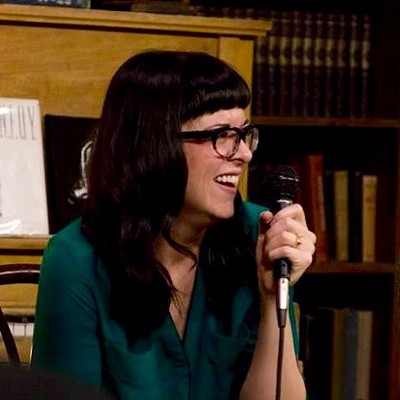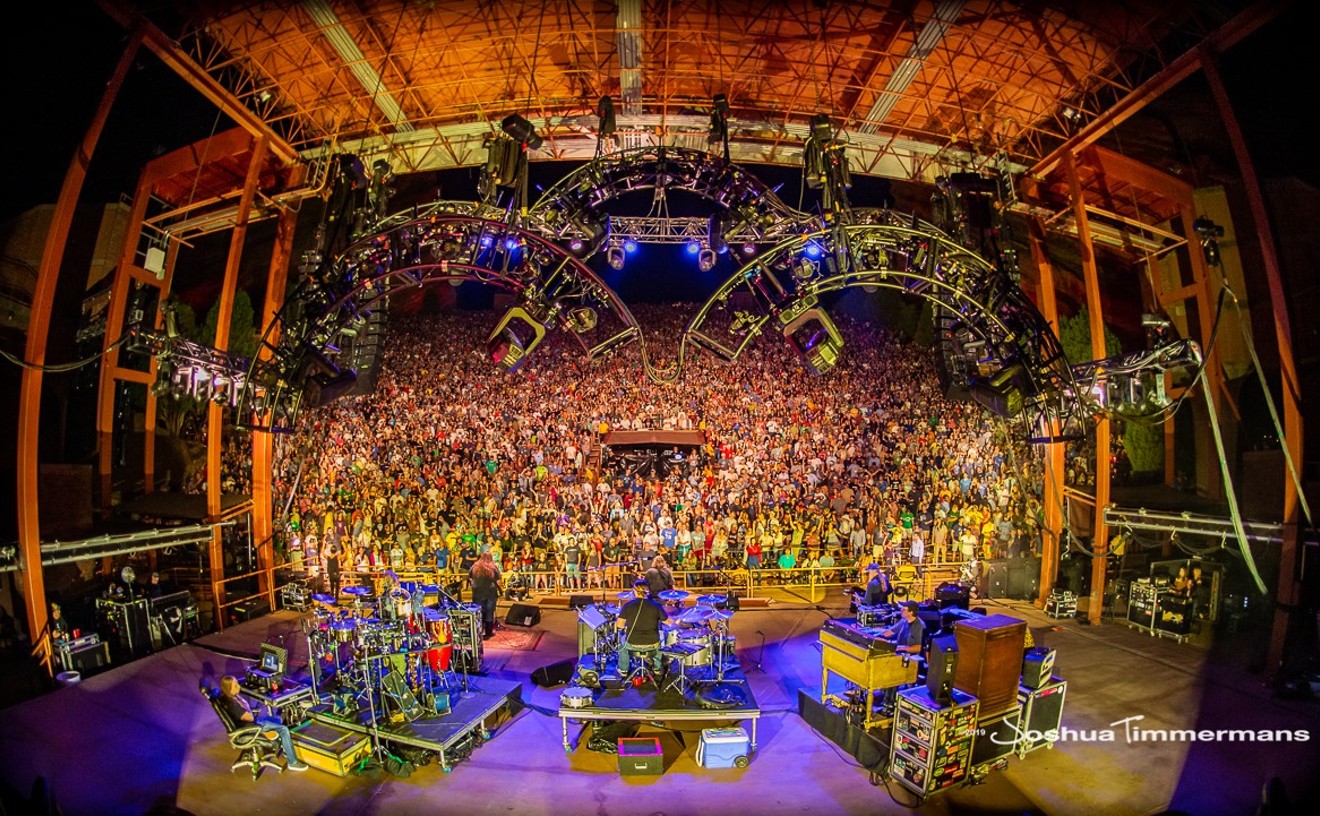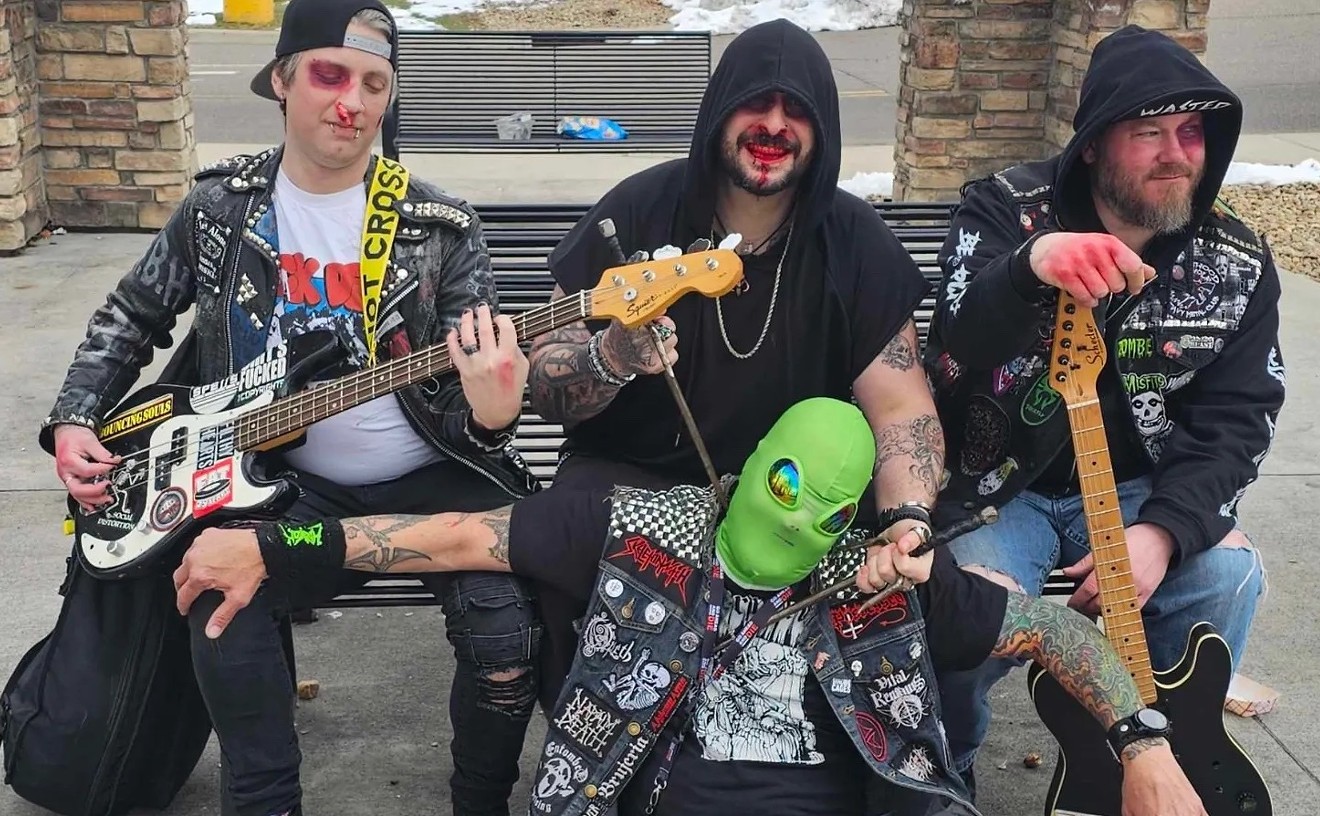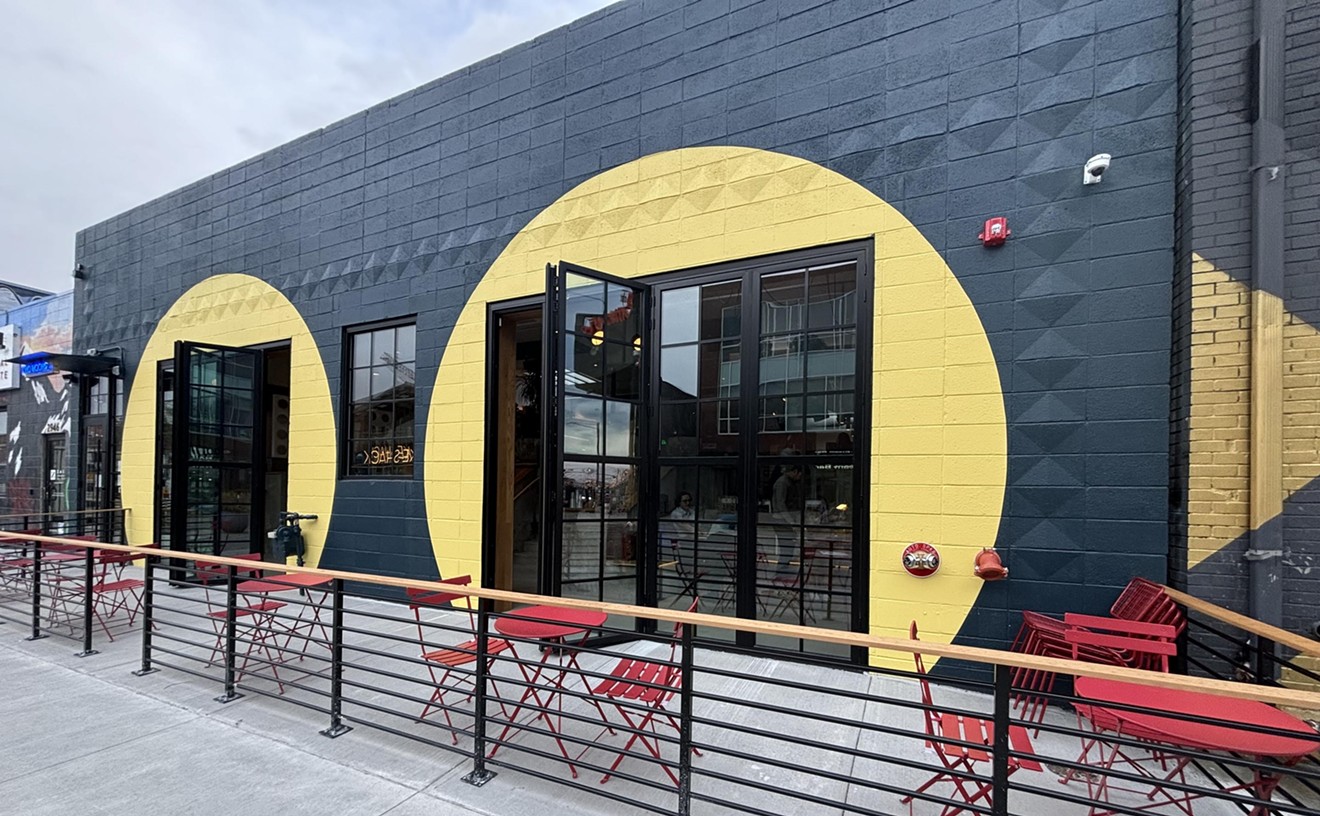She was brought into the venue on the shoulders of two hunky, shirtless gentlemen. I watched her, then I looked up at the crowd up top watching her — as a venue, Ophelia's Electric Soapbox is set up to let dining patrons in the halo of booths above observe the concert happening on the stage in the bottom of the open-air restaurant and show space. I wondered how many times this crowd had seen a woman in a wheelchair be carried front and center to perform in front of adoring fans. My guess is that most of them had never seen anything like it — not because she was being carried, but because artists in wheelchairs are often invisible to the larger art-supporting world.
For the record, the hired men were two of Denver's well-known trumpeters, Wesley Watkins and Joe Tabano, and the woman in the wheelchair was Kalyn Heffernan— an artist, activist, teacher, Westword MasterMind Award recipient and, of course, rapper and front-person of hip-hop outfit Wheelchair Sports Camp. (In the interest of transparency, my boyfriend is an active and touring member of this group, and Kalyn is a good friend.) I should also note that while the stage itself isn't the most accessible, Ophelia's has modified its historic building to include an elevator.
Seeing Kalyn being carried on stage — or seeing Kalyn on a stage at all — is not new to me. I've seen her play dozens of times, and being carried out to her audience is one of her favorite performance moves. I don't know her meaning or motive behind it (other than it is great drama for a live show), so I can only speculate the action's intended implication: Stairs be damned, Kalyn is going to get to the top. She will be visible, and nothing can stop her.
Until I became friends with Kalyn, I was completely oblivious to just how inaccessible it is to exist — anywhere. It's embarrassing and frustrating that as an able-bodied person, it wasn't until I was in my thirties that I became aware of the narrow doorways, steep stairways and slow-moving elevators (if there are elevators at all) that complicate and create barriers in so many of my friends' daily lives. But all I can do with my privilege and the newly gained insight, information and experience is change the way I do things in the world. I choose to spend time and energy helping to put on and supporting shows in accessible spaces and engaging other able-bodied people in conversations about accessibility.
Beyond the art and activism-driven spectacle that Kalyn intentionally creates at all Wheelchair Sports Camp shows, something else struck me: the visual and sonic diversity of the night's lineup. Women, people of color, queer friends and non-binary folx all made up the outfits that performed that night. It wasn't by accident, either. When Kalyn puts on concerts, she works her ass off to bring people to the stage who come from different corners of the music scene — and works with artists who represent the many faces of our modern world.
As a writer covering arts and culture, I look at music, comedy, dance, art, film and theater calendars and event lineups for a living. This means I often see the same heteronormative, able-bodied and mostly white representation being promoted. First of all, how boring. On a planet packed with fascinating people from all realms of experience, why do we find ourselves constantly hiring, promoting and praising the art of so few?
This is why our work as a whole arts community — artists, promoters, critics, patrons, etc. — goes beyond just looking at the art at hand. Our approach should be focused on accessibility, inclusion and intersection. This takes work — it means getting outside of your comfort zone or the areas of the art world you know best and setting out to explore, connect with, support and make visible art from what are seen as marginalized communities. Why? Because ultimately, when people see others like them on a stage being elevated for their art, it pushes those who have been in the shadows to come out and perform. It encourages audiences to challenge what they think they know about art. It invites new audiences in. It also gives a voice and a platform to so many who are being silenced in other areas of life.
I thought about this notion of inclusion when beloved Denver comedian Jordan Wieleba passed away recently. She offered many things to the world through her her art form, but one thing that she really brought to the table was the ability to be herself on stage. It moved me to see her perform; I can't imagine how it must have felt for folks living similar lives to see Jordan — who happened to be a trans woman — in the spotlight. That's the thing: There are millions of Jordans in the world who are often left out of the conversation and left out of the chance to be in the spotlight. Thinking about a time in the near future when a Jordan Wieleba being the top-billed comedian on a show is a regular occurrence doesn't have to be that far off from reality. It just takes the intention and concerted effort of a whole and united arts community to make it happen.
A few weekends ago, I helped put on Titwrench, a DIY music, art and performance festival I've been co-organizing for eight years. After almost a decade of creating a space for marginalized and underrepresented artists to perform and link up with new crowds, we are still considered an "outsider" festival for "outsider art." But as I looked around at our performers, volunteer staff and audience, I saw my everyday life. I saw grandmas and babies dancing together; I saw first-time love connections happening in real time; I overheard teens discussing what it means to be inclusive. Most of all, I saw people from varying backgrounds, ages and experiences interacting and enjoying art made by people who looked like them.
No art or music "scene" will really grow without looking at itself and examining how it operates. Every time you play a show, every time you book a show, every time you promote a show and every time you go to a show, you make the choice to support what happens on that stage. What if you used that immense power to challenge what others think? Being yourself is a radical act; imagine how much good we could do if we empowered others to be themselves and bring that energy to a place to be elevated, celebrated, nurtured and made sustainable by financially supporting art made by all members of our city/society. The power to diversify our collective experience is in our hands. It's on us to do something with that power.
[
{
"name": "Air - MediumRectangle - Inline Content - Mobile Display Size",
"component": "12017618",
"insertPoint": "2",
"requiredCountToDisplay": "2"
},{
"name": "Editor Picks",
"component": "17242653",
"insertPoint": "4",
"requiredCountToDisplay": "1"
},{
"name": "Inline Links",
"component": "18838239",
"insertPoint": "8th",
"startingPoint": 8,
"requiredCountToDisplay": "7",
"maxInsertions": 25
},{
"name": "Air - MediumRectangle - Combo - Inline Content",
"component": "17261320",
"insertPoint": "8th",
"startingPoint": 8,
"requiredCountToDisplay": "7",
"maxInsertions": 25
},{
"name": "Inline Links",
"component": "18838239",
"insertPoint": "8th",
"startingPoint": 12,
"requiredCountToDisplay": "11",
"maxInsertions": 25
},{
"name": "Air - Leaderboard Tower - Combo - Inline Content",
"component": "17261321",
"insertPoint": "8th",
"startingPoint": 12,
"requiredCountToDisplay": "11",
"maxInsertions": 25
}
]











